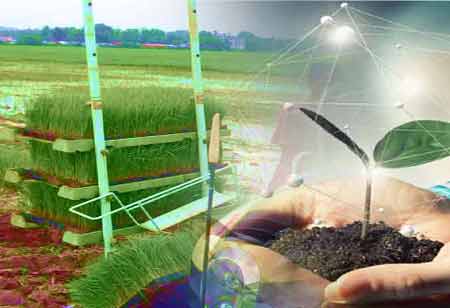Thank you for Subscribing to Agri Business Review Weekly Brief
Sustaining Agriculture With Smart Farming
The production of data by farms has always been ongoing.

By
Agri Business Review | Tuesday, April 18, 2023
Stay ahead of the industry with exclusive feature stories on the top companies, expert insights and the latest news delivered straight to your inbox. Subscribe today.
Today, new digital tools are helping farmers access these insights to harness unprecedented opportunities for their farms, communities, and the planet.
FREMONT, CA: The production of data by farms has always been ongoing. However, most of the agriculture has remained unattainable or, at best, impossible to manage well throughout its 10,000-year history. The advent of digital tools now allows farmers to access these insights and seize previously unattainable opportunities for their operations, their communities, and the environment as a whole. With the power of this information at their fingertips, farmers are also better positioned to handle the changing issues we all face, such as assisting in ensuring global food security, combating climate change, or protecting priceless natural resources.
There is no substitute for the right equipment–that makes all the difference. This is particularly true in the field of agriculture, where farmers must navigate a constantly shifting environment of shifting weather patterns, environmental conditions, consumer needs, regulatory obligations, and countless other considerations. This enables the better use of farms, farmer time, and inputs to promote sustainable harvests by assisting farmers in gaining new insights into what is taking place in their fields. That benefits them, their business, and the environment.
Digital tools that are changing the face of agriculture for good
Digital farming platforms: By combining data from their farms with industry-leading data science, supplemented by and shown by satellite imagery, digital farming tools like Climate FieldViewTM enable farmers to get insights about their operations. This digital platform offers a detailed picture of exactly what's happening so that farmers can make the most use of their resources, from weather to in-season field health to a live glimpse at combines harvesting crops in the field. These insights enable them to better predict when to plant, where to apply fertiliser when to apply and when to harvest given their particular fields. This method of prescriptive agriculture helps farmers conserve their inputs, cut costs, and save valuable time that they can apply to other aspects of their business in addition to providing individual field regions with what they need to grow.
Smart drones: By giving farmers useful new viewpoints into their operations, aerial drones are elevating agriculture. Many of these drones even come with specialised imaging equipment that can gather crucial data about the health of the plants throughout the field. Before it is obvious to the naked eye, these multispectral cameras can detect when plants are affected by several types of crop stress, such as pests, disease, or drought. By using this information, farmers can identify threats before they emerge. In some regions of the world, drones are also employed for precise application and planting.
In-field soil sensors: The basis for thriving crops is healthy soil. In-field soil sensors are becoming a more crucial tool on farms as a result. Using this exclusive digital technology, farmers can monitor soil parameters such as moisture and nutrients in real-time. Through these in-field sensors, farmers can save more water and other resources by determining exactly which inputs should be applied to which plants.
Data analytics and artificial intelligence: Agriculture is being advanced by digital tools outside of farmers' farms. By correctly predicting genetic results during trials, advances in artificial intelligence are quickening the pace and success of plant breeding breakthroughs. AI, when combined with other advancements, enables us to produce more sustainable solutions more quickly. Similarly, powerful data analytics tools are revolutionising the potential of the entire farming ecosystem.
Smart combines: The Internet of Things (IoT) is becoming more prevalent on farms. The pooled knowledge that syncs across various devices in an increasingly digital ecosystem can be used to great use by smart combines. Smart combines, which have sensors and can gather billions of data points, are assisting farmers in maximising the use of their resources. To plant the proper seeds at the ideal depth, density, and placement in the field to maximize their chances of success throughout the season, precision planters in particular use GPS data with historical and predicted field information. Therefore, this highly automated procedure aids in fuel conservation and lowers related carbon emissions.
The need for food will rise as long as the world's population keeps rising. To keep up, agricultural production must become more effective. One method to satisfy this demand is through smart farming. Technology is used in smart farming to increase agricultural productivity. This may involve using sensors to keep an eye on crops, weather data to forecast weather, and automation to handle chores like watering and harvesting.
Smart farming aims to produce more food with fewer resources. This can help make agriculture more sustainable and less harmful to the environment. The fact that farms can produce the same amount of food with less labour and resources can also increase their economic viability. Smart farming is still in its early phases of research, and it has a wide range of possible uses. Nevertheless, it can transform agriculture and make it more long-term sustainable.
There are many different aspects to take into consideration while discussing the future of agriculture. Finding the ideal technology combination is crucial if we want to promote sustainability and reduce our reliance on natural resources, that much is certain. It is more crucial than ever to find strategies to boost food production while utilising fewer resources due to the world's constantly expanding population. The development of smart agricultural technologies may make it possible to sustainably supply this need.





